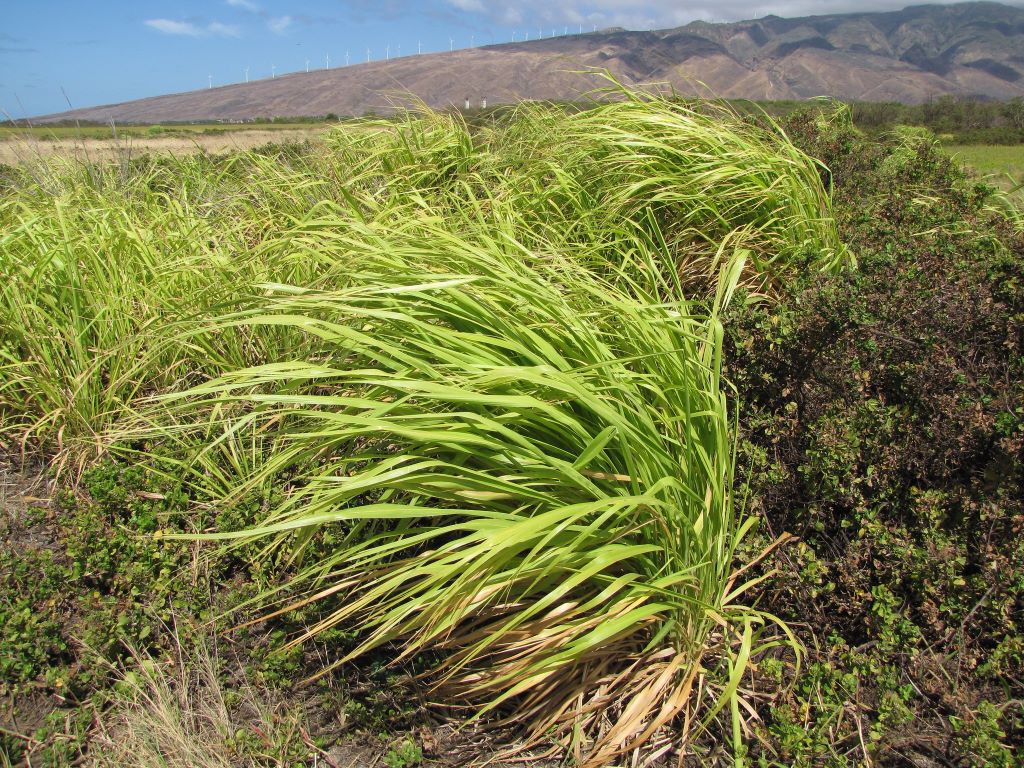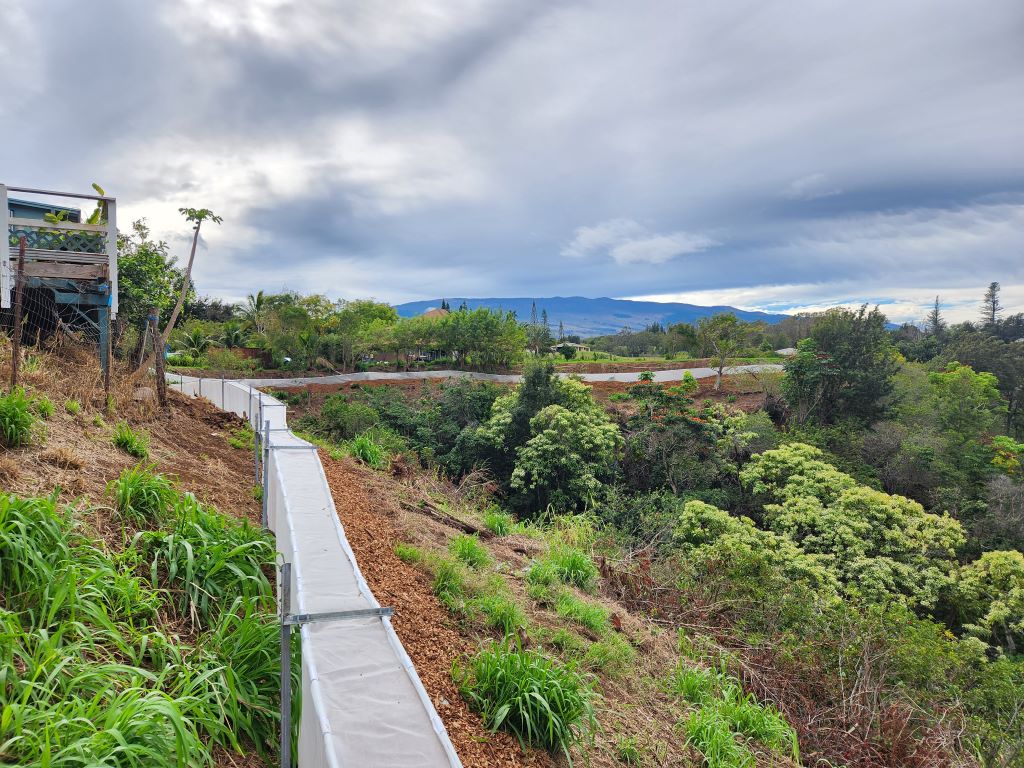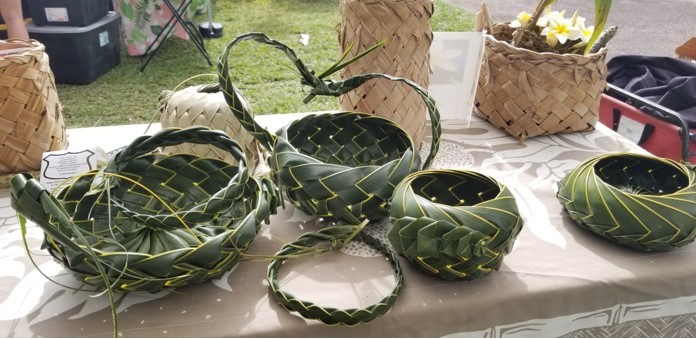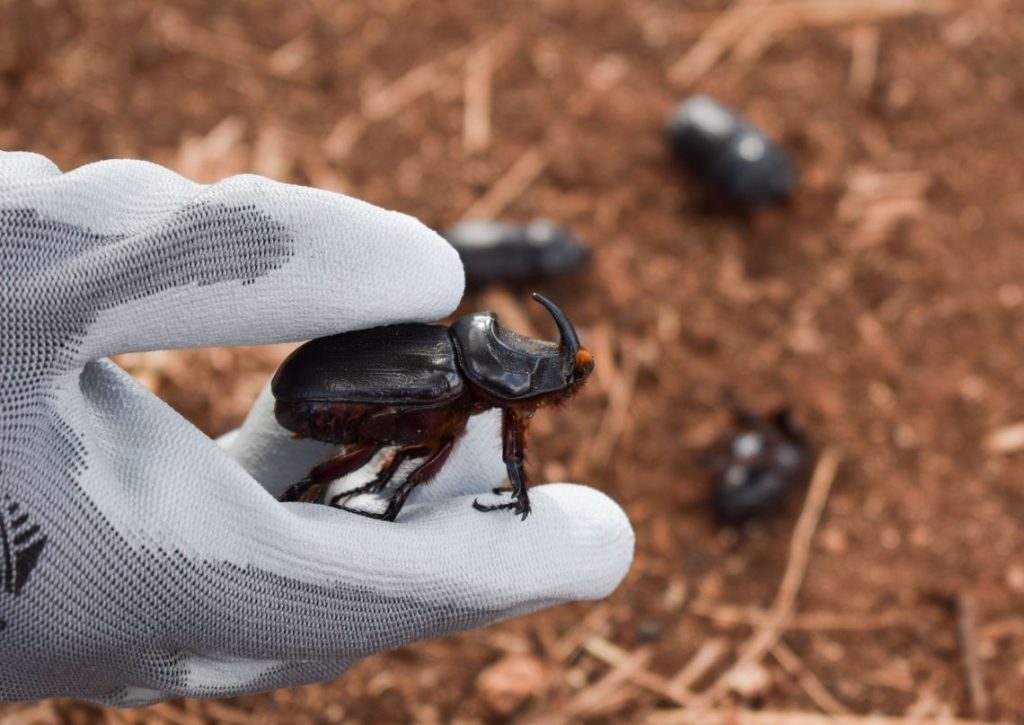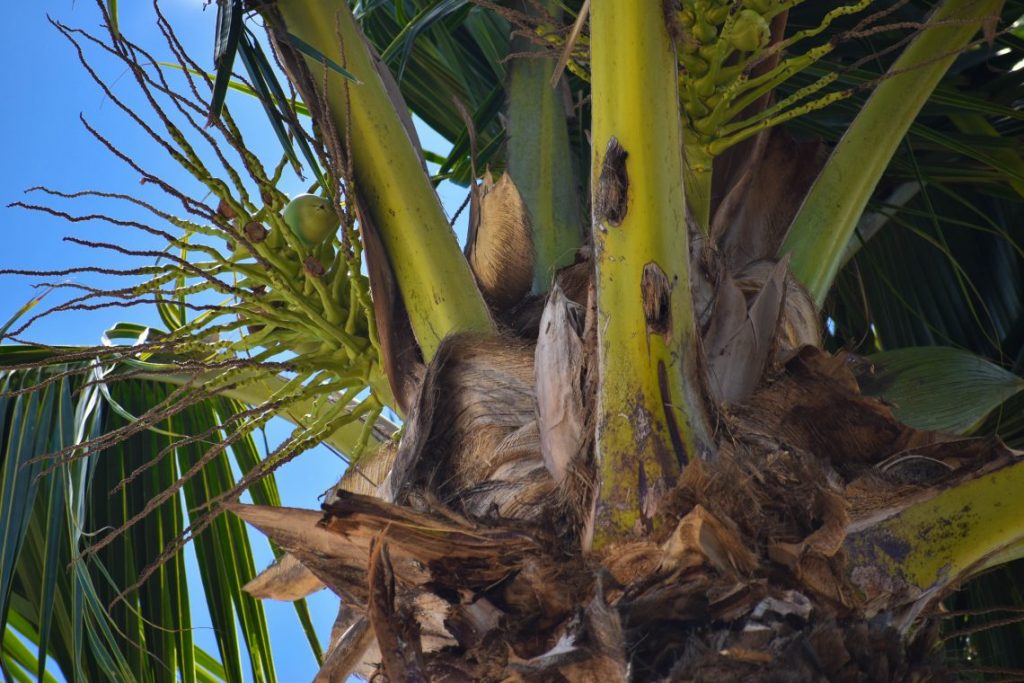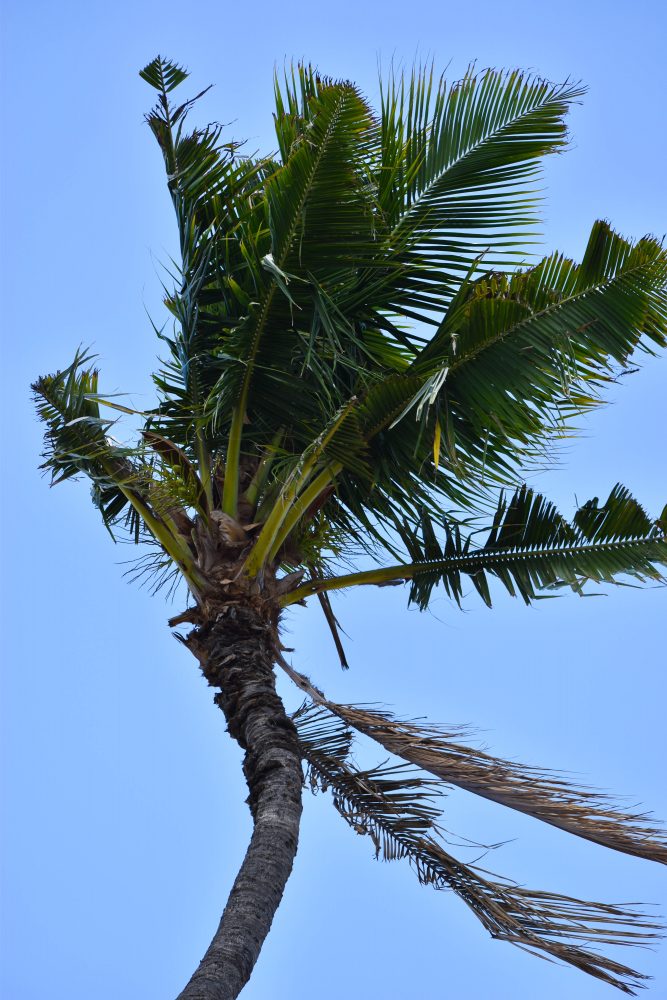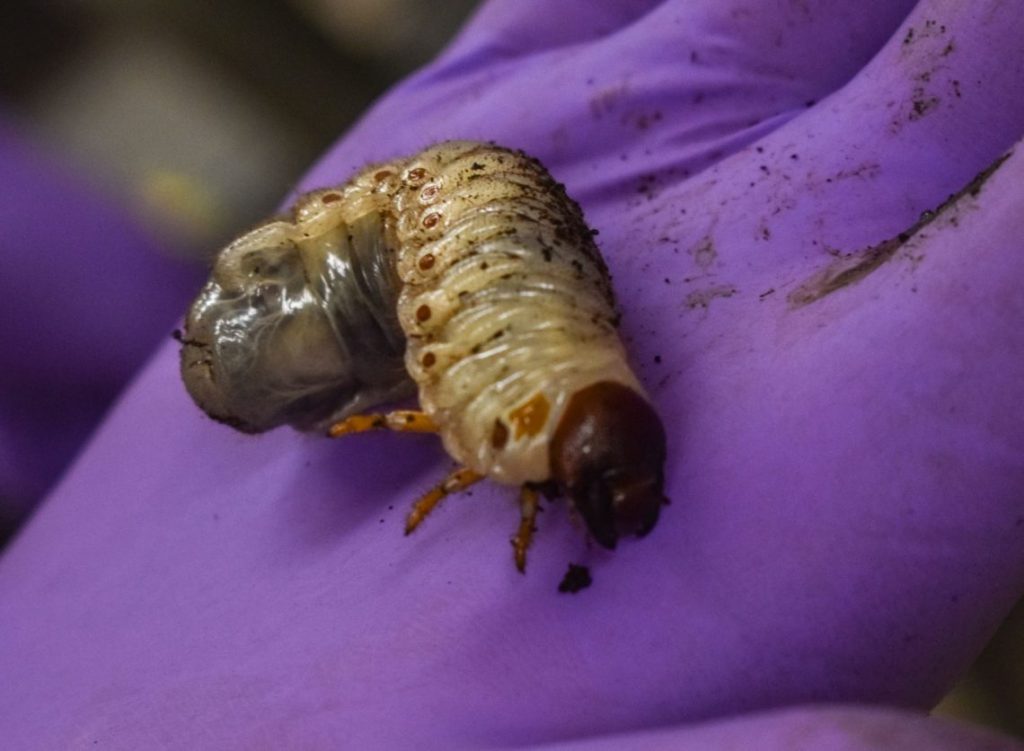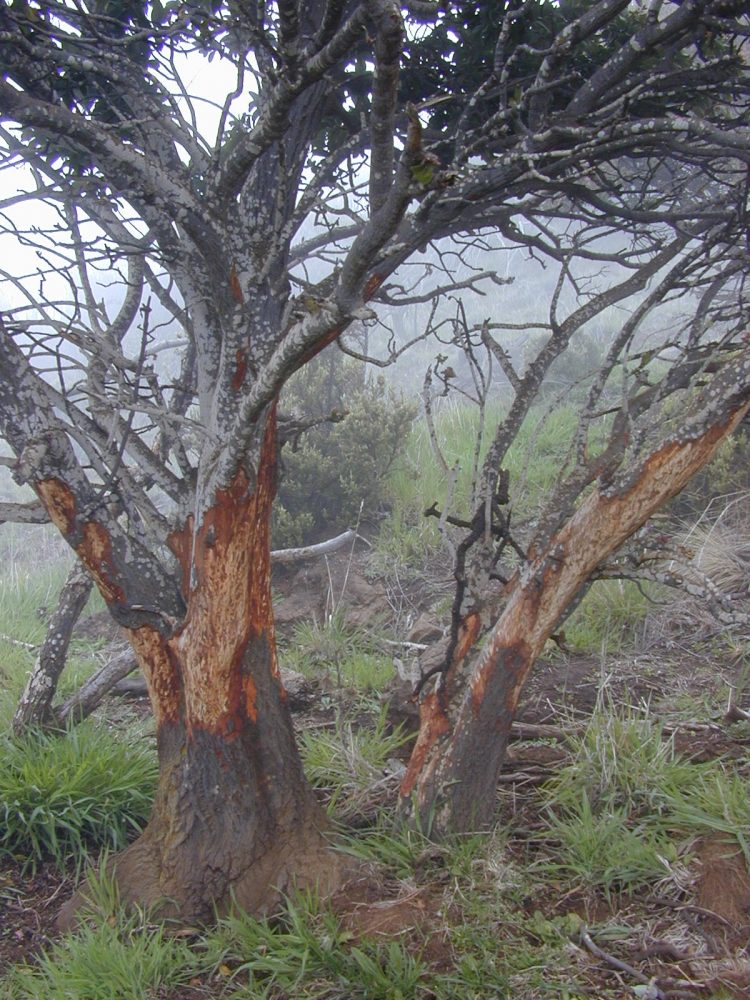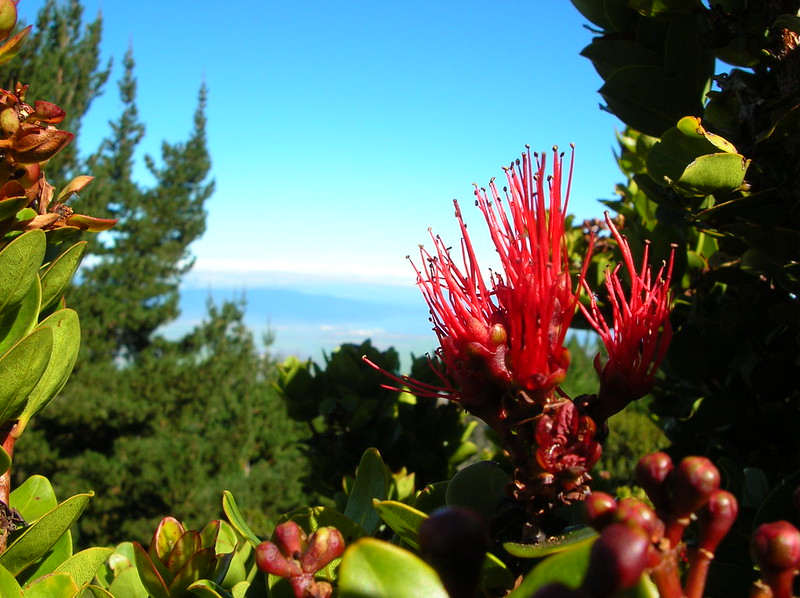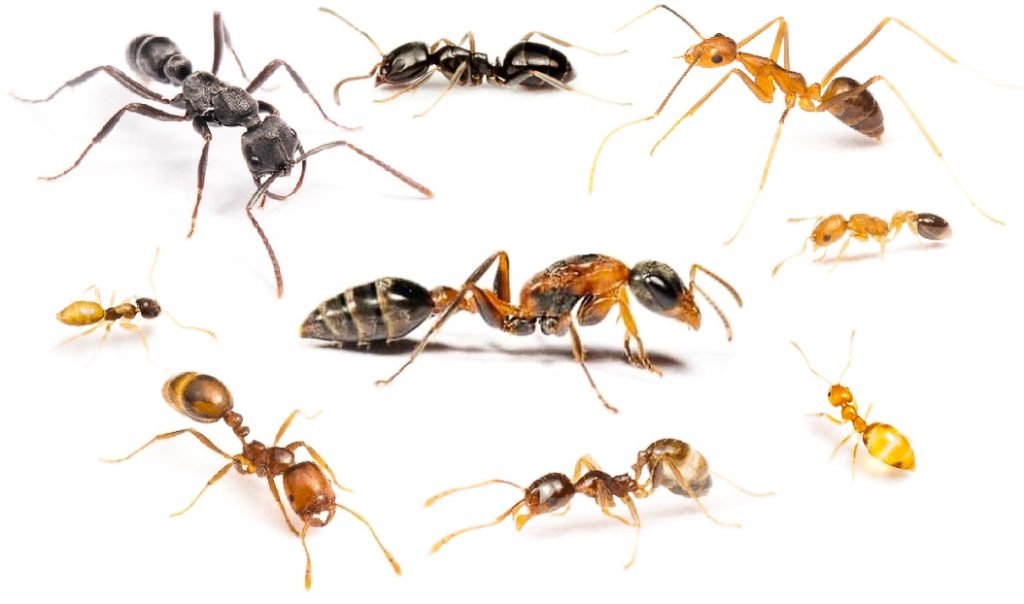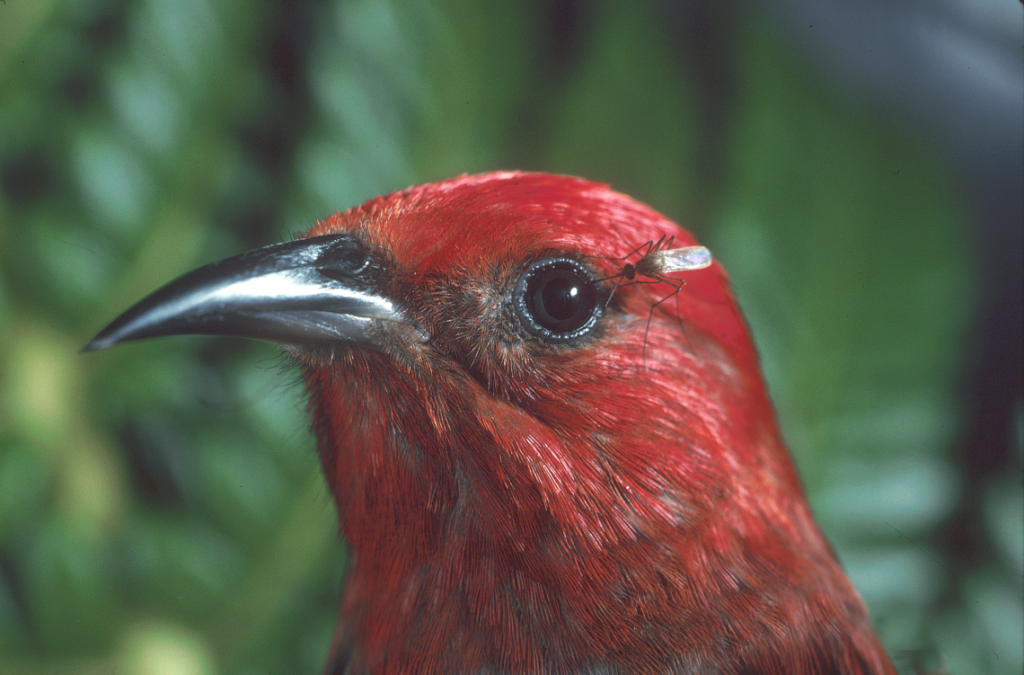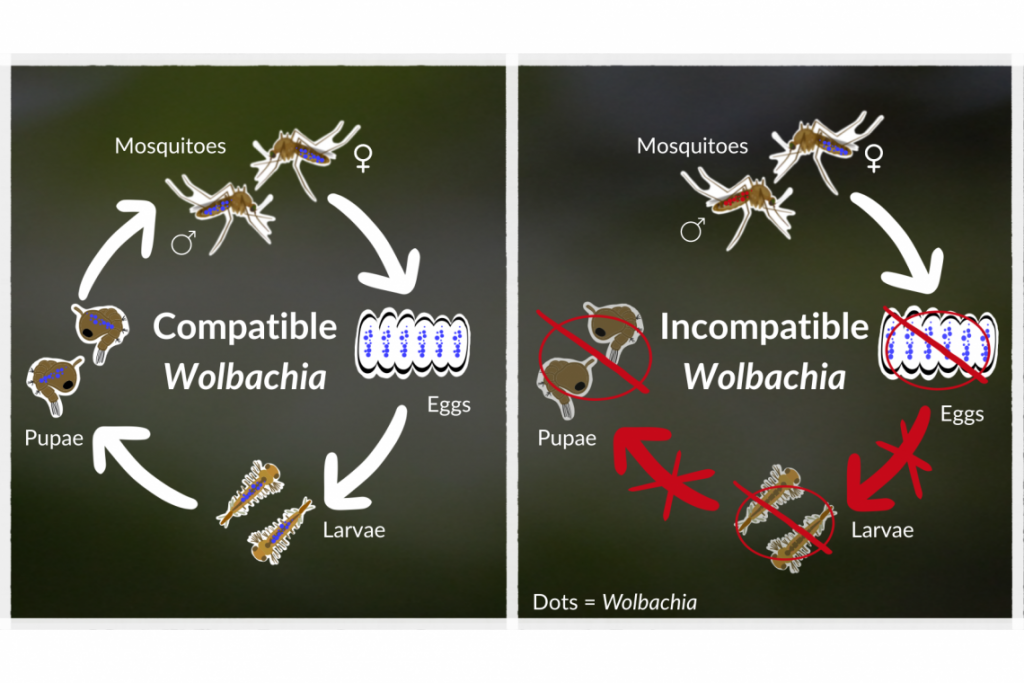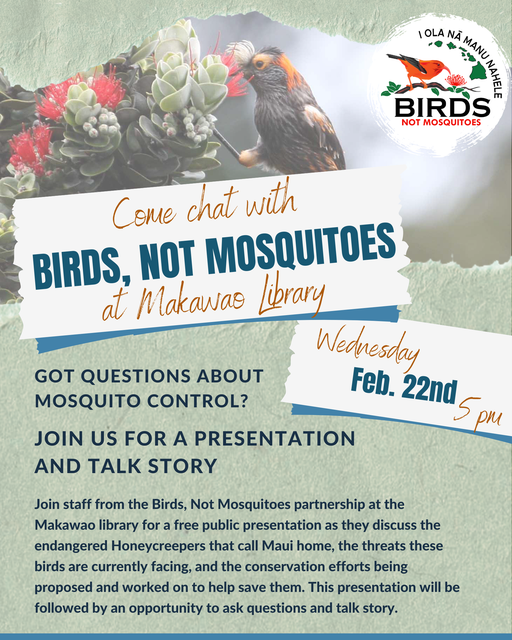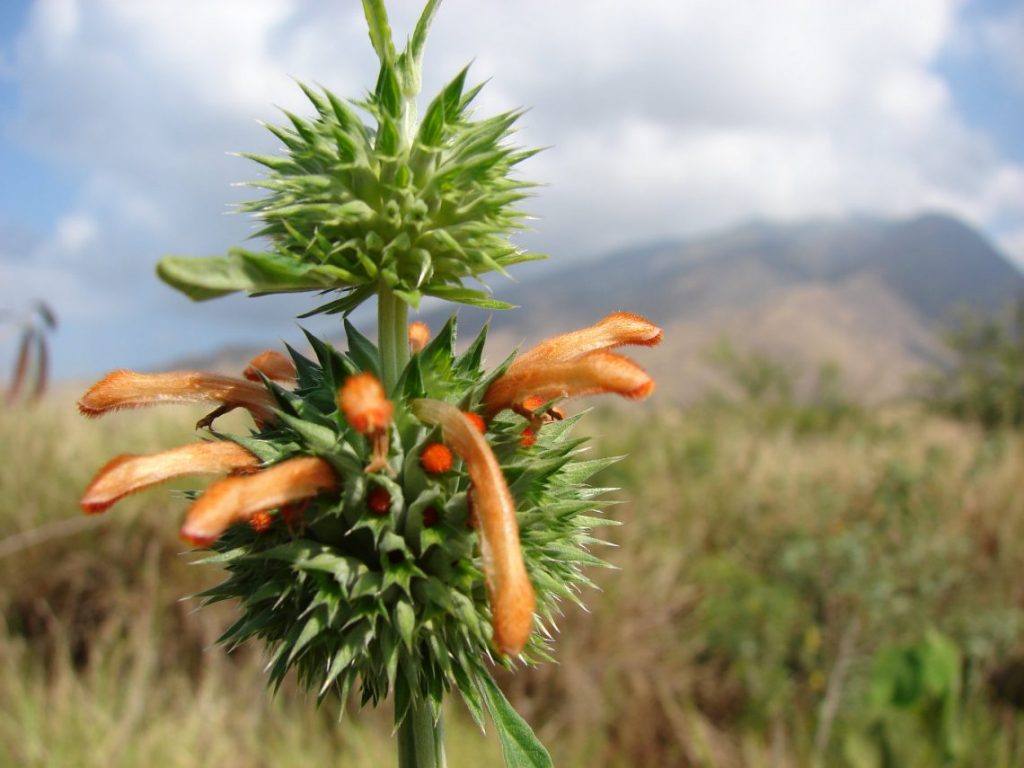
It’s easy to see how lion’s ear got its name, the distinctive orange flowers bloom in the spring. Photos courtesy of Forest and Kim Starr.
Lion’s ear: it’s six feet tall with a globular orange flower arranged on the stem like oranges and tangerines skewered on a shish kabob. It’s hard to ignore. From upcountry pastures to West Maui roadsides, this distinctive plant leads passersby to do a double take, both because of its appearance and abundance. Lion’s ear—sometimes called lion’s tail—is known to science as Leonotis nepetifolia and is invasive in Hawai‘i.
This plant owes its successful colonization to three factors: plentiful seeds, a range of habitat types, and the ability to thrive in human-modified landscapes. In a single growing season, the spiky seed heads release an estimated 1,400 seeds per plant. While most seeds will fall around the parent plant, some spread downstream along waterways. Once the plant germinates and sets seeds the population continues to grow.
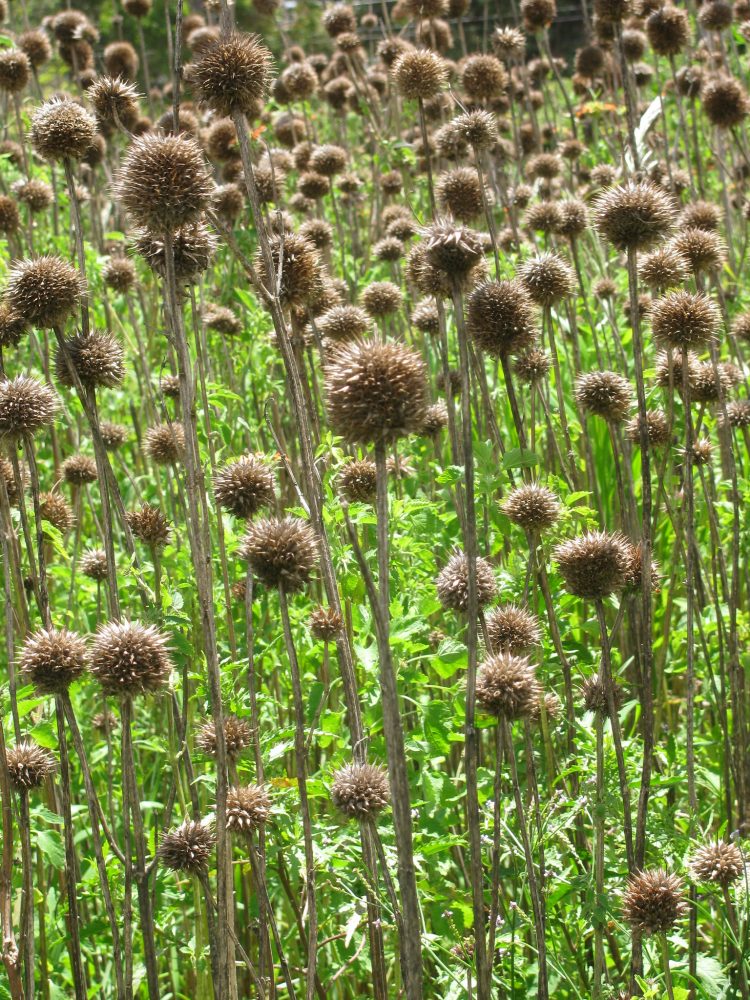
The spiky seed heads persist even after the plant is dead keeping people and animals from knocking them down. Each plant can release 1400 seeds in a year and after several years, thickets form. Photo courtesy of Forest and Kim Starr.
Lion’s ear thrives in the mesic and dry areas of Makawao, Kula, Ulupalakua, and Kaupō allowing it to spread along roadsides and into drought-stressed pastures. It grows in lower elevations as well and is now found in Kīhei, Mā‘alaea, Olowalu, Lahaina, and Honokōwai. Tolerant of shade or sun, the winter rains trigger germination and its spiky seed heads discourage grazing and activity that would knock the plants down. Other favored locations include places where vegetation is altered and bare soil is present: grading, grazing, or erosion create the conditions for seeds to germinate. Plants sometimes show up along gulches after floods carry seeds down to eroded banks.
Native to tropical regions of Africa, the plant’s unique appearance led to its popularity as an ornamental as early as the 17th century. As European colonization spread, so did the lion’s ear, escaping cultivated gardens and becoming naturalized (self-sustaining wild populations) in tropical and subtropical regions of the world. In Hawai‘i, a student at Kamehameha Boys School on O‘ahu collected the first documented specimen in 1938.
On Maui, lion’s ear has become more abundant in the last decade as the once-scattered populations fused. Thickets of plants in pastureland and abandoned fields are now a common sight. While too widespread for an island-wide eradication program, problematic patches can be removed. As with any invasive plant removal, control efforts timed to disrupt the seeding cycle will be the most efficient and effective; persistence over multiple years is necessary to exhaust the seeding cycle. Recommended control actions include:
- Physical/cultural control: For small populations, hand-pulling works because the roots are shallow. For larger populations, mowing or dozing is an option. Any seeds should be removed (bagged and thrown away) or tilled deep into the soil, followed by planting with a crop or pasture grass. Infested areas should be monitored for several years to eliminate the seed bank.
- Chemical control: In Australia, land managers use picloram + triclopyr diluted with water as a foliar spray. Always follow the label when using herbicide.
If you’re noticing lion’s ear in new areas, share your observations. The online citizen science program iNaturalist is a great way to learn and document what plants (and animals) are in your area, including those that stand out – like a spiky orange flower – as well as those that are less obvious or that you’ve never seen before. Your contributions to the larger understanding of where invasive species are and help resource managers understand impacts and anticipate future invasions, and sometimes, these observations turn out to be a pest that can be stopped before it becomes widespread.
Lissa Strohecker is the public relations and education specialist for the Maui Invasive Species Committee. She holds a biological sciences degree from Montana State University. Kia’i Moku, “Guarding the Island,” is prepared by the Maui Invasive Species Committee to provide information on protecting the island from invasive plants and animals that can threaten the island’s environment, economy, and quality of life.
This article was originally published in the Maui News on June 13th, 2024 , as part of the Kia‘i Moku Column from the Maui Invasive Species Committee.
Read more Kiaʻi Moku articles



